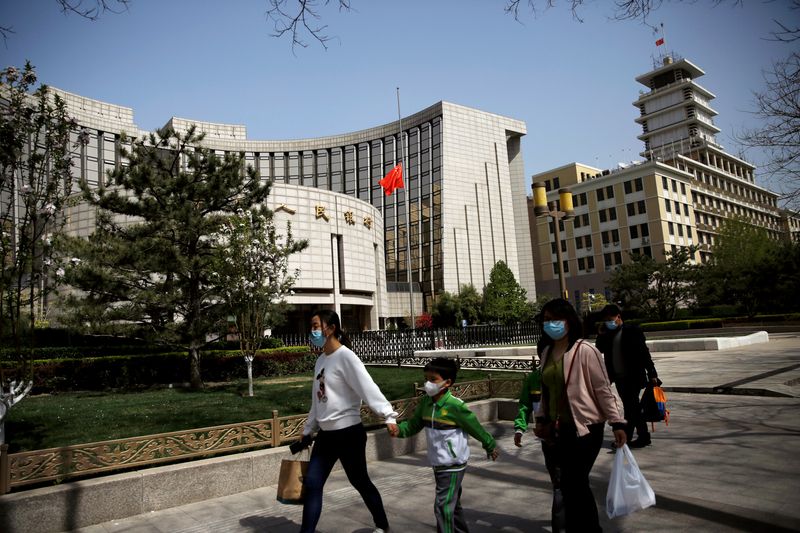By Geoffrey Smith
Investing.com -- China's banks cranked up their lending again in June, the latest illustration of a government-driven campaign to support an economy under pressure from stop-start Covid lockdowns, tension between government and the technology sector, and the implosion of a real estate bubble.
Total Social Financing, the broadest measure of credit to the Chinese economy, leaped by 5.17 trillion yuan ($771 billion), equalling its second-biggest monthly rise in at least three years, as government instructions to state-owned banks fed through into actual lending. New loans, meanwhile, rose to 2.8 trillion yuan from 1.89 trillion in May and a mere 645 billion in April, when consumer-facing businesses in particular were hobbled by widespread lockdowns across the country.
The figures help to explain why China's central bank has not been quicker to ease monetary policy, given the apparent lack of inflationary pressure in the economy. They also show how, despite repeated government campaigns to find new ways to support growth, it remains as dependent as ever on debt.
The numbers come less than a week after Bloomberg reported that the Finance Ministry in Beijing is looking at a plan to bring forward to the second half of this year some 1.8 trillion yuan in local government borrowing scheduled for 2023, in order to help meet the government's official growth target of 5.5%. Most independent forecasters are expecting Covid lockdowns and other issues to keep growth to little more than 4%. Bloomberg reported that the borrowing would, as usual, be largely directed at the infrastructure sector.
Michael Pettis, a finance professor with Peking University, noted that so far this year total debt has increased by a little over 20 trillion yuan, an amount equal to roughly 34% of expected GDP over the period.
"This is an awful lot, but no surprise given the sharp deterioration in the quality of Chinese growth this year," Pettis said via Twitter.
On current trends, he noted, China's debt-to-GDP ratio will hit over 285% by the end of this year, up nearly 40 percentage points in just five years.
"It should remind us, if we needed reminding, of the cost of China's continuing with its investment-heavy growth model," he summed up.
While China's factories have largely managed to work through the spate of lockdowns and mass Covid testings this year, they continue to disrupt daily life for millions, hitting final consumption. Nomura analysts estimate that some 114 million Chinese are currently under some form of mobility restriction, with that number set to rise amid announcements suggesting that a new and more infectious sub-variant of the Omicron strain of Covid-19 appears to have arrived in the country.
The gambling hub of Macau has closed all of its casinos for a week as a 'circuit-breaker' measure after discovering over 1,500 cases since mid-June. That's its most extreme response since the first days of the pandemic two years ago. Meanwhile, authorities in Shanghai have ordered three rounds of mass Covid testing this week for most of the districts that are home to its 25 million people.
